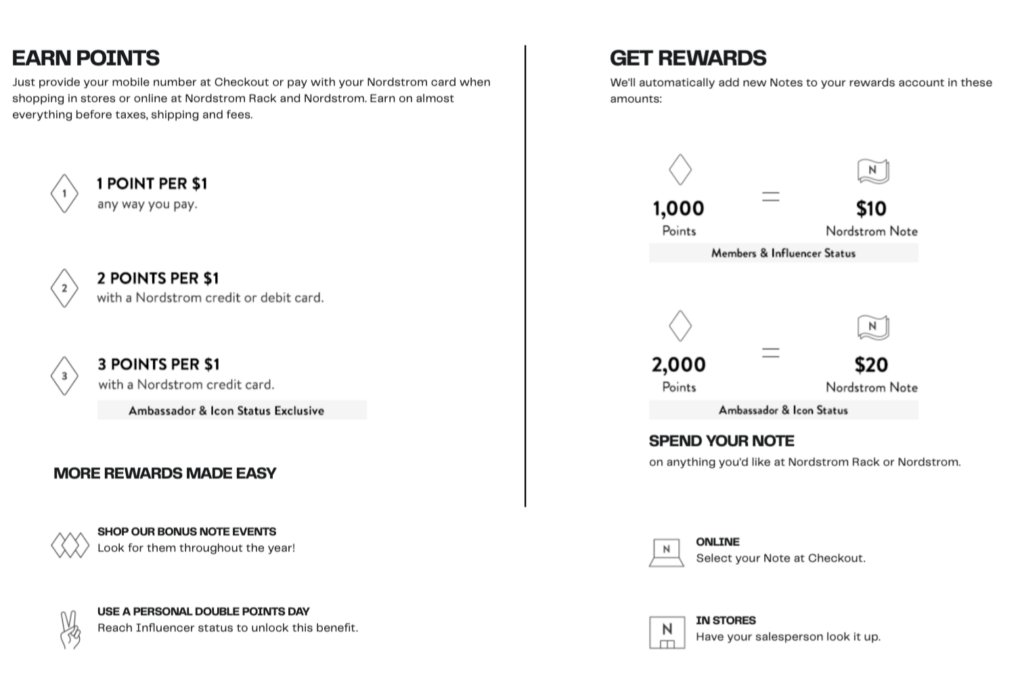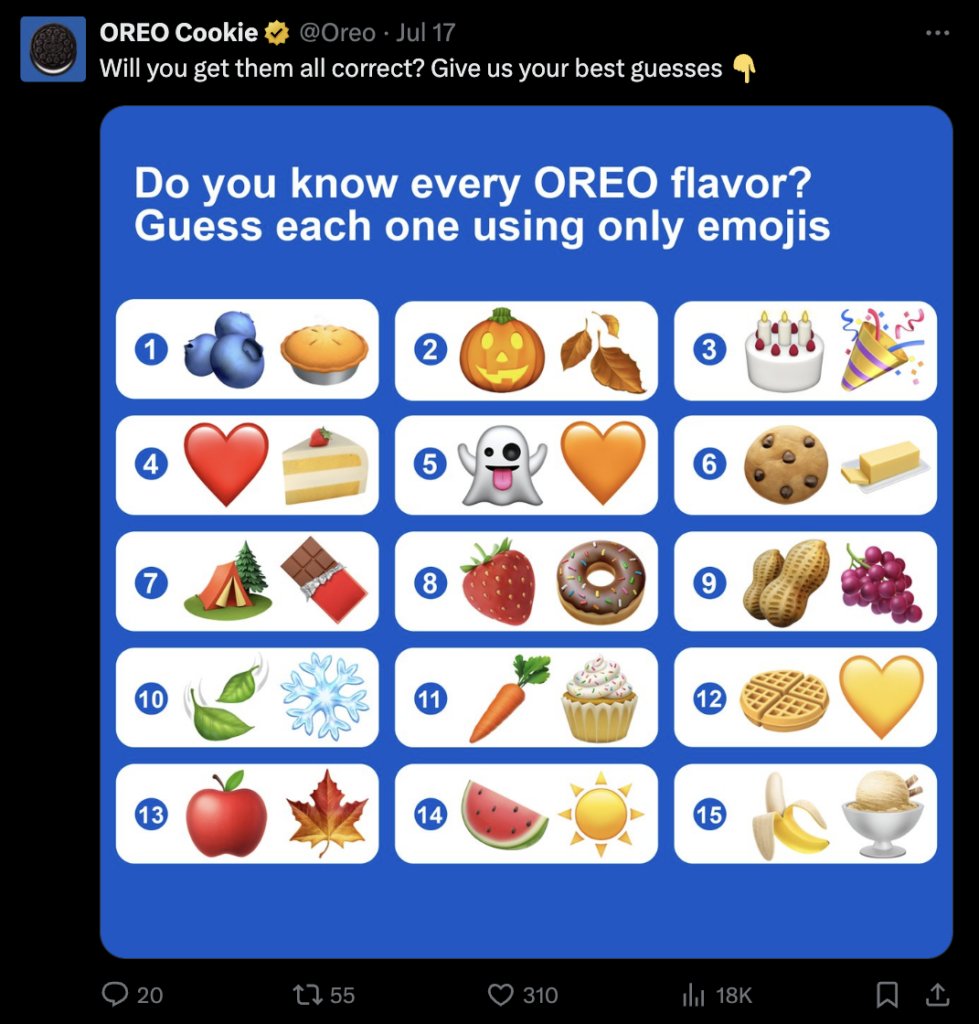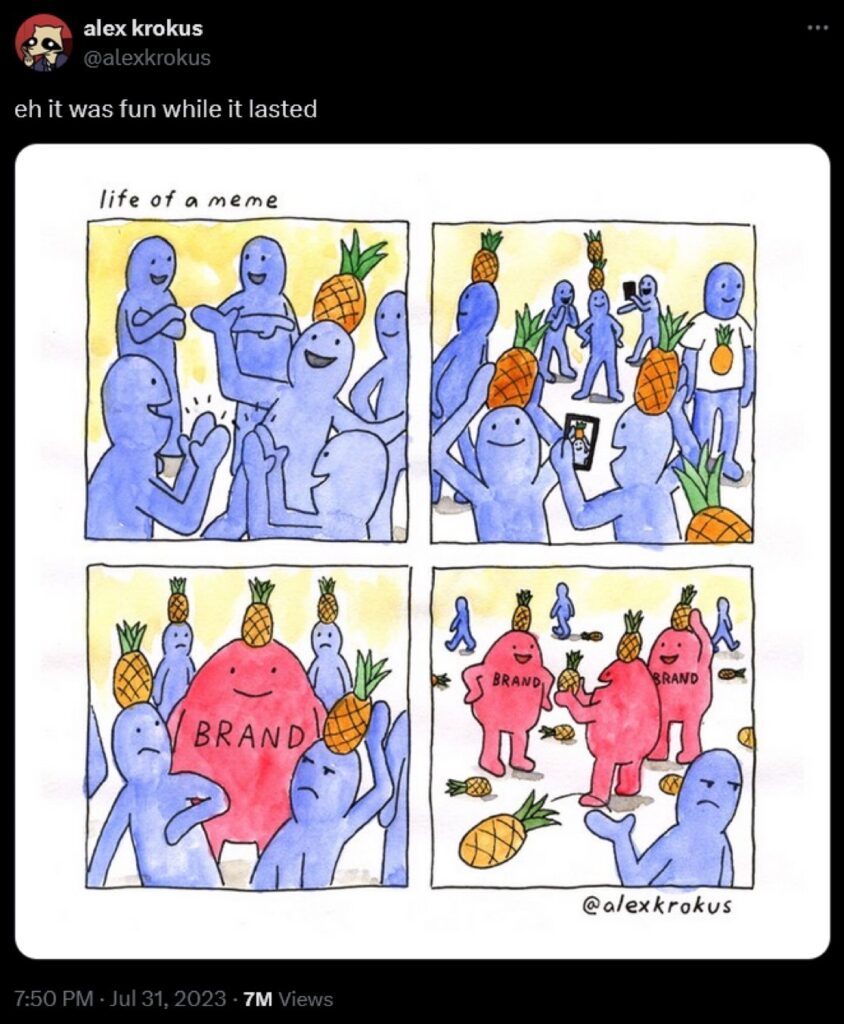6 Strategies to Increase the Number of Repeat Customers for Your Brand

Table of contents
What is it that makes you walk into your favourite cafe time and again? Is it because the barista recognizes you and is already working on your order before you’re at the counter? Or is it because of the one time they gave you a complimentary pastry with your coffee? Or maybe it’s the fact that they just make really good coffee.
There’s a lot that goes into making a first-time customer into a repeat customer. No matter what industry you’re operating in, you most likely have a ton of competition waiting to out-do you and take your customer.
So what can you do to make sure your customers become regulars? The answer lies in creating a positive connection with them. It’s all about putting the customer first.
It is by no means an exact science. And there’s no way you can ever be sure that your customers will keep coming back to you. But there’s a few things you can do to improve your chances.
In this article I’ll take you through 6 actions you can take to build a base of repeat customers that are loyal to you and will advocate for your brand.
Let’s jump right in!
Table of Contents
- Who is a repeat customer and why are they important?
- 6 strategies to increase repeat customers for your brand
- Invest in tools that enhance overall customer experience
Who is a repeat customer and why are they important?
A repeat customer is someone who comes back to purchase goods or services from your business after an initial transaction with you. If you’ve got customers who make repeat purchases from you then you’re most likely doing something right.
If you find that your customers seem to be one-timers and then you don’t hear back from them, then they either did not like your product or were dissatisfied by the service.
This is a problem you’ll need to solve otherwise here’s what’s going to happen.
You’re going to have to spend a lot of money on acquiring new customers. Everybody knows keeping a customer is a lot cheaper than acquiring a new one. You’ll be spending heavily on marketing and sales which can quickly add up.
What’s more, if you’re in a saturated market, there’s a finite pool of customers. If you’re constantly seeking new customers, you’re bound to hit a wall at some point. And you’ll be burning money along the way.
But let’s take a step back. The fact that you’re not getting any repeat customers is a diagnosis of deeper issues within your business – whether it’s product quality, customer service, or the overall experience you’re providing.
Repeat customers are crucial for your business because –
- Greater lifetime value – As repeat customers begin to trust your brand and build a positive association with it, they tend to make bigger, more frequent purchases from you. This results in an increased Customer Lifetime Value (CLV). Customer lifetime value is essentially the total revenue a business can expect from a single customer over the course of their relationship.
- Brand advocacy – Repeat customers also tend to become advocates for your brand. When they have positive experiences with you consistently, they’ll talk about it with their friends and on social media. This way you get organic visibility and promotion that’s a lot more effective than any ad you run. People trust word-of-mouth recommendations more because it’s coming from someone they know. In this way repeat customers become unofficial ambassadors of your brand for free!
- Predictable revenue – Another important benefit of repeat customers is the stability they provide in terms of incoming revenue. You can forecast how much money you expect to make with a lot more accuracy which helps you plan and make informed decisions about things like staffing, inventory, and future growth and expansion.
- Cross-selling and up-selling opportunities – Repeat customers are also much more receptive to cross-selling and upselling efforts because of the trust they have for your brand. Whether it’s recommending related products, offering premium versions, or bundling items, loyal customers are more inclined to explore these offers. This increases your AOV but it also enhances the customers’ overall experience because they’re getting solutions tailored to their needs. Win-win.
So how do you encourage your customers to come back to you and become regulars?
6 strategies to increase repeat customers for your brand
Here are 6 effective strategies you can implement to turn your first-time customers into returning customers and keep them coming back for more.
1. Provide exceptional customer service
Let’s start with something very fundamental that’ll give you outsized returns. The very first thing you should have in place is a robust customer service structure. This is the most important thing you can do for your customers and it’ll help them feel heard and appreciated.
It’s the first step to building a trust and a positive relationship with your customers so that they return to you for their future needs.
Here are a few things to focus on to make sure you’re delivering consistent, helpful customer service to your customers –
- Make customer service a company-wide priority – Your customer support reps are the first point of contact and the face of your business but the responsibility for great customer experiences should not end with them. From the CEO to the marketing team, everyone should be committed to it.
Only then, no matter what you do – designing a new logo, launching a product, sending out your weekly newsletter – it will reflect your commitment to customer happiness.
- Make it easy for customers to reach you – Offer multiple channels for your customers to reach out to you such as email, live chat, phone call etc. This way the customer can choose their preferred method of communication. For example, I personally don’t like phone calls and would prefer a text-based approach like a live chat with a rep. Also make sure you’re suitably staffed, no one likes long wait times.
- Offer self-service options – As an extension to my previous point, some customers prefer to help themselves. They’d prefer to look for a solution themself either in a detailed FAQ page or community forums or a knowledge base. This reduces their need to interact with a rep for help and is usually much quicker.
- Empower your employees – This one’s an underrated tip but give your employees the freedom to make decisions on the spot. Trust them to do what’s best for the customer. That’s it. Training and SLAs and guidelines are great foundations but great customer support happens when agents are empowered to act beyond scripts.
- Proactively Seek Feedback and Act on It – Proactively seek out feedback from your customers via surveys and work on it. Consistently gathering feedback allows you to understand customer pain points and areas for improvement. It also shows customers that you value their input and are committed to improving their experience.
Ultimately it’s about building a business on the foundation of stellar customer service and having a culture of customer-centricity. An example of such a business is Lego.
In 2013, 7-year old Luka Apps lost his Lego figurine as it fell out of his coat pocket, and he was so upset about it, he wrote a letter to the company explaining the tragedy. And Richard from Lego’s customer service team wrote back.

This is what a company that looks after its customers looks like. This is what exceptional customer service looks like (see image below).

Recommended read: How to build a customer-centric organization from the ground up
2. Create a rewards and referrals program
Another good way to encourage repeat customers is by incentivizing them through rewards. Think about it. How many times have you gone back to a business and transacted with them because they were offering you a special discount or some kind of an offer.
You should loyalty create programs that reward your frequent buyers with discounts, exclusive offers, or free products. Alternatively, you can create a referral program which rewards your customers for spreading the word about your business and bringing in new customers. In both these scenarios, you’re letting your customers know that if they stick with you, they’ll be rewarded.
These programs drum up repeat customers for your business and they encourage said customers to remain loyal to you. Nordstrom, a brand renowned for their customer focus, uses this strategy very well.
Nordstrom runs an exclusive, tier-based loyalty program called The Nordy Club, offering members benefits like exclusive event invites, style and beauty workshops, gift cards, vouchers, and early access to products.

The program is wildly successful and that’s evident because of the 13+ million members who are part of the club. These members spend four times more and make three times more store visits than non-members!
Recommended read:How to Create a Successful Customer Loyalty Program
3. Give back to society
More and more customers today are taking a stand on issues they care about and they’ll conduct business only with brands that align with their values. In fact, an Edelman study finds that nearly two-thirds of consumers around the world (64%) will buy based on beliefs.
Brands today have the power and influence to bring about positive social change and their stance and their actions matter a lot. When you give back to society, whether through charitable donations, sustainability initiatives, or community programs, you show your customers that your brand is committed to making a positive impact.
This way you also build trust in the eyes of your customers and over time it translates to loyalty.
One such example that I always bring up in such conversations is Patagonia. The brand has a long-standing commitment to environmental responsibility. Patagonia has pledged 1% of their sales to the preservation and restoration of the natural environment since 1985 which has added up to about 140 million USD in donations.

Patagonia also advocates for sustainable practices, using eco-friendly materials and promoting fair labor conditions.
Its commitment to causes like these strengthens customer loyalty. It creates a deeper connection with ethically conscious consumers. The feeling associated with the brand is almost synonymous to a sports team jersey that you’re proud to rep. These customers will forever be fiercely loyal to the brand.
4. Leverage customer data to create personalized experiences
If you want to encourage repeat buying, you’ll need to leverage customer data and tailor their experiences and what you’re offering accordingly.
Analyzing data such as purchase history, preferences, and behavior allows you to recommend relevant products, send targeted promotions, and create personalized communications.
For example, an online retailer could create email campaigns targeting customers who haven’t made a purchase in the past three months with special discounts, while sending new product alerts to regular buyers.
Or take Netflix as a real-life example. Netflix learns from your preferences based on what you’ve been watching of late and then tailors the recommendations for what they think you’d like next. Spotify’s algorithm follows a similar idea. Or even when you’re shopping for clothes and you get a “you might also like” section.
This customization to a customer’s unique tastes and needs enhances their overall experience significantly. It sends the message “Hey, we saw you liked ‘A’. We think you’d also like ‘B’ and ‘C’.” It makes the customer feel seen. And they’ll be much more likely to return to you. Remember how I mentioned the barista that’s already working on your coffee before you’ve reached the counter? Same idea.
5. Be present and engaging on social media
It’s 2024 and social media platforms like Instagram, Threads, and X (despite being cluttered) are still a great place to talk about your brand and build a community. 7 in 10 Americans spend time on social media regularly and if you put in a little bit of effort into being present and engaging online, you’ll build a connection with your customers. This is especially important for retail businesses as they can present their offerings directly to their end customers.
There are quite a few things you can do on social media to build a relationship with your audience and encourage repeat customers –
- Talk about what you’ve been up to – Keep your followers up-to-date on newer products you’ve launched, any upcoming sales, or any kind of promotion. Social media channels are a great way to reach your audience and slightly less invasive compared to methods like email or message.
- Promote your values – Social media can also be a good place to promote your values and what you stand for. Talk about your brand’s community efforts or partnerships with charitable causes. It’ll help your mission reach more people and along the way you’ll strengthen emotional ties with your audience.
- Engage with your audience – A lot of brands online make the mistake of talking ‘at’ their audience and not to them. You don’t want to have one-sided conversations because that’s when you’ll be perceived as salesy. Instead, try having real conversations with your audience. Run polls, contests, wish them on special occasions. Oreo is a brand that has a very strong social media presence.

- Be funny and relatable online – An underrated trick but very effective if you’re trying to build a bigger social media community is to be funny and relatable. Most of the largest D2C businesses in the world spend a lot of time and energy into this. It’s great to boost brand recall and will be much more likely to attain virality than your promotional content. Check out a couple tweets by McDonald’s where they’re engaging as well as funny.

- Try retargeting ads – A lot of customers may have checked out your website or even added a few items to the cart but did not follow through with the purchase. Sometimes they just need a little more push. You can use social media channels to retarget them with ads. You can also do this with special promotions for your repeat customers to encourage them to come back.
If there’s one advice I were to give you for building a brand on social media, it’s to not force-fit your brand into every conversation. You don’t want to be the brand that makes every trend or occasion about themselves. Sometimes you just have to sit them out. Here’s a great meme that captures how your average audience perceives brands online.

6. Build a product you’d be happy to use
And finally, if you want your customers to keep purchasing from you, you’ll need to focus on building an excellent product. You can do everything I’ve mentioned in the previous points and your customers still won’t repeat unless you have an excellent product. There is no substitute for quality.
Your sales and marketing teams might be able to get you new customers but the way to hold on to them is by giving them a product that’s useful either in a utilitarian sense or an aesthetic sense. So it’s got to either be useful or beautiful. I’m oversimplifying but those are the only real reasons people make purchases.
Building a product you’re proud to talk about and happy to use. Generally, that’s a good barometer for a high quality product.
Good products will lead to customer satisfaction, word-of-mouth recommendations, and long-term loyalty. If your product delivers on its promises and provides genuine value, customers will naturally return, making it the foundation of a successful, sustainable business.
Invest in tools that enhance overall customer experience
In order to enhance the overall experience your customers have and encourage repeat customers, investing in a variety of customer-focused tools is key. They’ll make your life simpler and help you build a customer-centric business.
Customer data management tools can help you source, manage, and analyze customer data and build a detailed profile of your customers. This way you can serve them better as you’ll understand their identity, their needs and their tastes. You can personalize your marketing and sales efforts too.
Customer service softwares can help you streamline your customer service process and improve the quality of support you offer. If you’re interested in a tool that works inside your Gmail or Outlook inbox and adapts it into a fully-functioning help desk, you should check out Hiver. Get Hiver for free.
If you get this right, you’ll build an army of loyal customers, not very dissimilar from a cult following. Think about how loyal Apple users are to the brand.

































